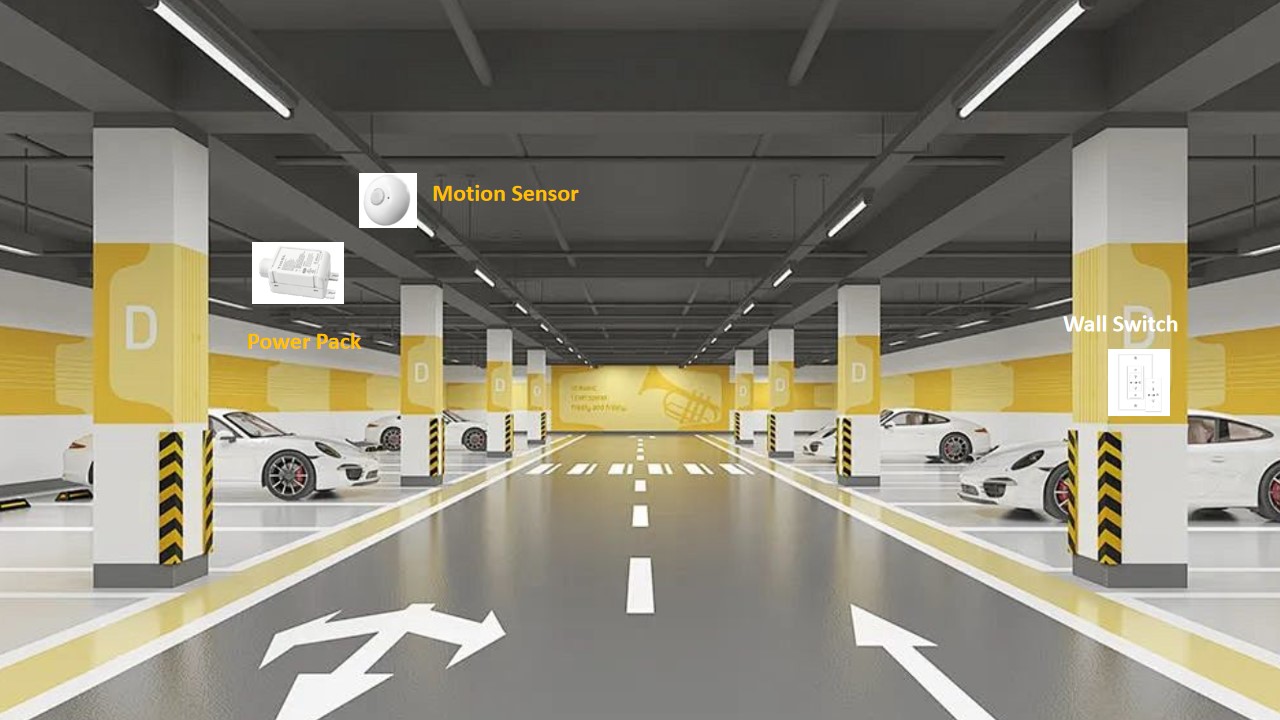
In the smart lighting control system, linear lights, power packs, human body sensors and wall switches work together to achieve efficient and flexible lighting control. The following is their collaborative mechanism:
1. Functions of Each Component
LED Lamp:
LED lamps that provide lighting, usually powered by low voltage (such as 12V/24V), support brightness adjustment or color temperature change (depending on the design).
Power Pack:
Converts AC power (220V AC) into low voltage DC power (such as 12V/24V DC) to power LED lamps.Intelligent control core: Receives signals from human body sensors or wall switches to control the switching and dimming of lamps (some high-end power packs have built-in control logic and do not require additional controllers).
Motion Sensor:
Detects human movement through infrared (PIR) or radar and sends "person/no person" signals to the power pack. Adjustable detection range, sensitivity and delayed shutdown time (such as turning off the light 30 seconds after a person leaves).
Wall Switch:
Smart switch: communicates with the power pack via wireless protocols (such as Zigbee, Wi-Fi) or low-voltage signal lines, and supports manual switching or scene switching.
2. Collaboration Process
Scenario 1: Automatic lighting control (dominated by human body sensing)
Trigger condition: The human body sensor detects activity and sends a signal to the power pack (for example, "someone enters").
Response action: The power pack starts the power supply of the line light and lights it up according to the preset brightness (such as 100% brightness).
Delayed shutdown: When the human body sensor continues to detect no activity, the power pack is notified to turn off the lamp after the countdown ends (such as "turn off the light 30 seconds after no one is there").
Scenario 2: Manual intervention (wall switch control)
Manually turn on the light:
Press "on" on the wall switch, the signal goes directly to the power pack, and the lamp is forced to turn on (override automatic control).
Manually turn off the light:
Press "off" and the power pack stops supplying power. Even if the sensor detects someone, the light remains off.
Mode switching:
Long press the switch to switch between "automatic/manual mode" (such as turning off human body sensing and only controlling by the switch).
Scenario 3: Exception handling (communication interruption)
If the human body sensor fails, the wall switch can still manually control the light to ensure system reliability.
3. Communication and Wiring
Wired solution: Use low-voltage signal lines (such as DALI, 0-10V) to connect power packs, sensors and switches, which has high stability and is suitable for large projects.
Wireless solution: Communicate through Zigbee, Bluetooth or Wi-Fi, without additional wiring, flexible installation, suitable for home or renovation projects.
Is a controller required?
Some systems rely on a central controller to coordinate devices, while high-end power packs may have built-in control logic to process signals directly.
Typical Applications
Office corridor: The lights are on when people come in during the day, and they are turned off after a delay when people leave; the wall switch can be manually turned on to full brightness mode at night.
Home bathroom: The lights are automatically turned on at low brightness when people are sensed at night, and the sensing function can be turned off by the switch during the day.
Through the above collaboration, the intelligent lighting system strikes a balance between energy saving and user experience, while supporting flexible automation and manual control.
Copyright © ARK Lighting(Shenzhen)Co., Ltd. All Rights Reserved | Sitemap |